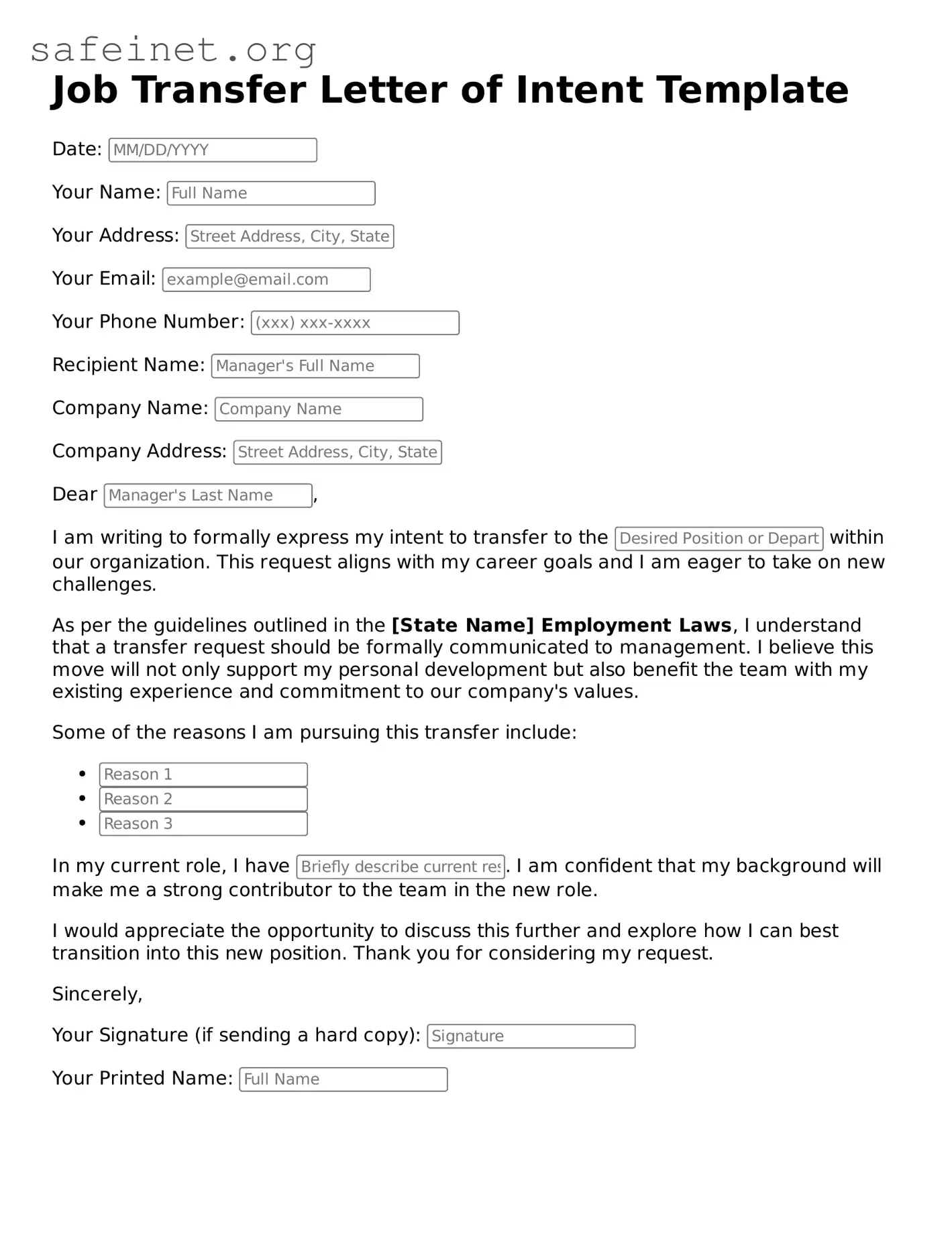What is a Job Transfer Letter of Intent form?
The Job Transfer Letter of Intent form is a document that an employee uses to express their interest in transferring to a different position or department within their current organization. This form serves as a formal request and details the employee’s reasons for seeking the transfer, along with their qualifications for the new role. It helps facilitate communication between the employee and their employer regarding potential career development opportunities within the company.
When should an employee submit the Job Transfer Letter of Intent form?
An employee should submit the Job Transfer Letter of Intent form when they have decided they want to pursue a transfer and have identified an appropriate position or department. Typically, this submission is most effective after reviewing the company’s policies regarding internal transfers. It is best to submit the form well in advance of any internal application deadlines to ensure that supervisors have time to consider the request and discuss it with relevant parties.
What information should be included in the Job Transfer Letter of Intent form?
The Job Transfer Letter of Intent form should include several key pieces of information. This includes the employee’s current job title and department, the position they wish to transfer to, and a brief explanation of their interest in the new role. Additionally, employees should highlight their relevant qualifications, skills, and experiences that make them a strong candidate for the transfer. It is also helpful to express a willingness to discuss the request further with their supervisor or HR.
Is the Job Transfer Letter of Intent form legally binding?
No, the Job Transfer Letter of Intent form is not legally binding. It is a preliminary communication used to indicate an employee's interest in transferring. Submission of the form does not guarantee that a transfer will occur; it is merely the first step in a process that may include further discussions, interviews, or approvals from management and HR.
What happens after submitting the Job Transfer Letter of Intent form?
After the form is submitted, the employee’s supervisor or the HR department will typically review the request. They may reach out for a conversation to discuss the transfer, evaluate the employee’s qualifications, or provide feedback. Depending on company policy, the process may involve additional steps such as formal interviews or assessments. Ultimately, the decision about whether the transfer is approved will rest with the management and relevant departments within the organization.
Can an employee change their mind after submitting the form?
Yes, an employee can change their mind after submitting the Job Transfer Letter of Intent form. If circumstances change or the employee feels that transferring is no longer the best option, they should communicate their decision promptly to their supervisor or HR. Open communication is crucial in maintaining a professional relationship and in ensuring that the organization understands the employee’s current intentions.
